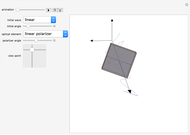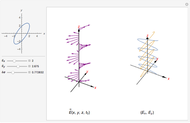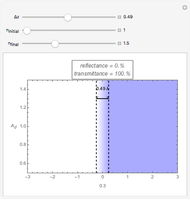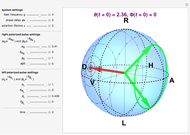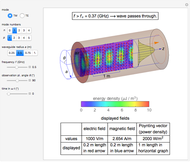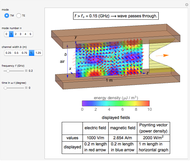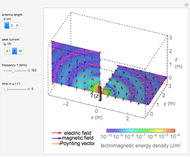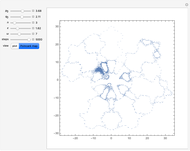Elliptical Polarization of Light Waves

Requires a Wolfram Notebook System
Interact on desktop, mobile and cloud with the free Wolfram Player or other Wolfram Language products.
This Demonstration shows the resultant polarization of light when there is a phase shift of  between the
between the  - and
- and  -polarized components. The resultant light is elliptically polarized. Special cases of elliptical polarization are linear polarization, obtained for angles 0° and 180°, and circular polarization, obtained for angles 90° and 270°.
-polarized components. The resultant light is elliptically polarized. Special cases of elliptical polarization are linear polarization, obtained for angles 0° and 180°, and circular polarization, obtained for angles 90° and 270°.
Contributed by: Lakshmi Manasa Abburi (January 2020)
Open content licensed under CC BY-NC-SA
Snapshots
Details
Circularly polarized light has many applications, including spectroscopy, materials characterization and wireless communications. This Demonstration shows how the output polarization is modified by the phase difference imparted to the light upon reflection from the thin film substrate system.
This Demonstration is based on Mathematica lecture notes for ECE 504 offered by Prof. Jesse Wilson at Colorado State University. It was produced for ECE 504 Physical Optics (Instructor: Jesse Wilson), Electrical & Computer Engineering Department, Colorado State University.
Reference
[1] R. M. A. Azzam, "Linear-to-Circular Polarization Transformation upon Reflection by a Transparent Thin Film on a Transparent Substrate: Analytical Determination of Principal Angles and Principal Azimuths," Applied Optics, 57(32), 2018 pp. 9529–9532. doi:10.1364/AO.57.009529.
Permanent Citation






